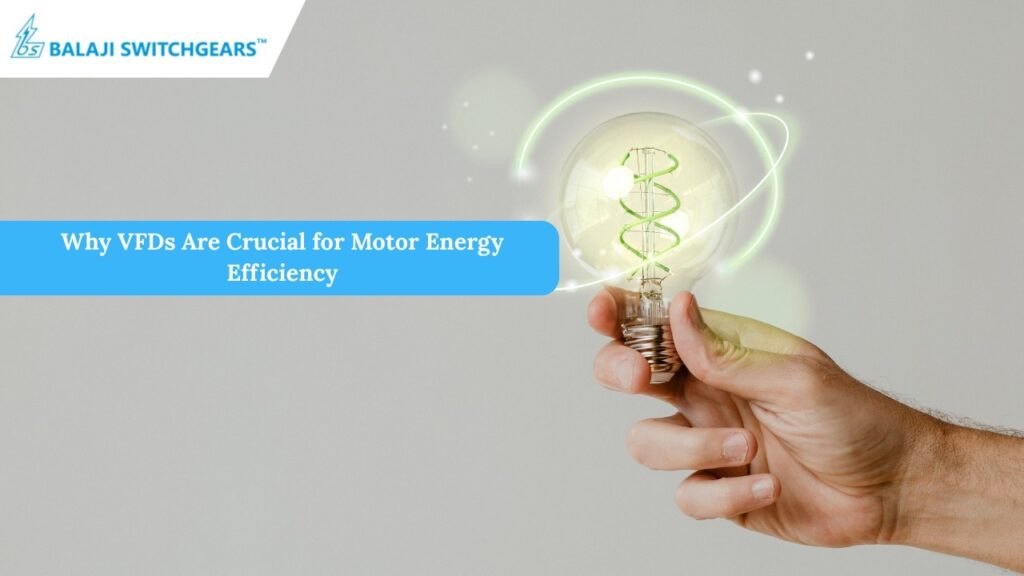In modern industries, energy efficiency has become a top priority. From manufacturing plants to HVAC systems, every unit of electricity saved translates into cost savings and a smaller environmental footprint. One of the most effective tools for achieving this is the VFD (Variable Frequency Drive) — a game-changer in motor control and performance optimization.
What is a VFD?
A Variable Frequency Drive (VFD) is an electronic device that controls the speed and torque of an industrial motor by varying the frequency and voltage of the power supplied to it. Traditionally, motors run at a constant speed, regardless of the actual load. VFDs, however, allow speed control, ensuring motors operate only at the speed needed for the task.
How VFDs Improve Energy Efficiency
1. Matching Motor Speed to Load Demand
Without a VFD, motors run at full speed even when full power isn’t required. This leads to wasted energy. By adjusting the motor speed according to real-time demand, VFDs significantly reduce power savings losses and improve electrical efficiency.
2. Reduced Wear and Tear
Running motors at lower speeds when full output isn’t needed reduces mechanical stress, extending equipment life and reducing maintenance costs.
3. Soft Start and Stop
VFDs offer smooth motor startup, avoiding the high inrush current of direct-on-line starts. This not only improves energy efficiency but also prevents sudden mechanical shocks to connected equipment.
4. Enhanced Process Control
With precise motor control, industries can fine-tune operations, resulting in better product quality and reduced waste.
Key Benefits of Using VFDs in Industrial Motors
- Significant Power Savings: Studies show VFDs can reduce energy consumption by 30–50% in certain applications.
- Lower Operational Costs: Reduced electricity bills and maintenance expenses.
- Improved Process Flexibility: Adjust speeds instantly to match production needs.
- Better Environmental Impact: Lower carbon footprint through optimized electrical efficiency.
Common Applications of VFDs
- Pumps and Fans: Reduce energy use in HVAC systems by adjusting airflow and water flow.
- Conveyors: Match conveyor speed to production rates, saving energy.
- Compressors: Prevent overworking by controlling motor speed.
- Mixers and Agitators: Optimize mixing speed without mechanical gear changes.
Why VFDs Are the Future of Industrial Energy Management
With rising electricity costs and growing sustainability targets, businesses can’t afford to ignore VFD technology. The ability to combine motor control, speed control, and power savings makes them indispensable for industries aiming to improve energy efficiency.
By investing in VFDs for industrial motors, companies not only save on operational costs but also contribute to environmental conservation — a win-win for business and the planet.
Conclusion
The case for why VFDs Are Crucial for Motor Energy Efficiency is clear. They offer unmatched benefits in motor control, electrical efficiency, and operational flexibility. Whether in HVAC systems, manufacturing plants, or any setup using industrial motors, VFDs are the smart choice for reducing energy waste and optimizing performance.

